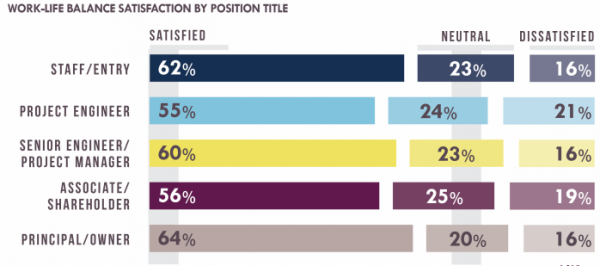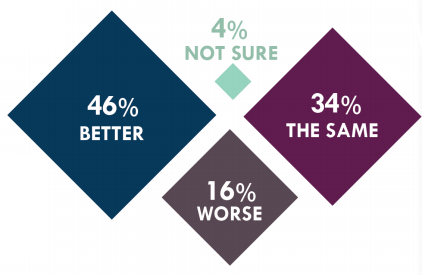2020 was an interesting and challenging year for everyone, including the structural engineering community. Going forward, it’s important we understand and learn from what needed to change thanks to the pandemic, and what that means going forward. Thankfully in 2020, the National Council of Structural Engineers Associations (NCSEA) Structural Engineering Engagement and Equity (SE3) Committee completed a survey of over 5,000 engineers.
This survey helps obtain a good picture of the industry through a variety of different lenses that affect engineers like pay, work environment, diversity, performance, etc. In this article, we will explore one of the SE3 publications from the 2020 survey. You can find this document on the SE3 website.
Work-Life Balance & Working Remotely
A fair assumption on the work patterns of structural engineers is the propensity to be sometimes overworked or need to put in extra hours around project deadlines and submissions. Whether you are a structural engineer or studying to become one, you have either experienced this or are familiar with the trend. With this in mind, let’s see how structural engineers feel about their overall work-life balance in 2020. Figure 1 shows the relative satisfaction based on level of experience.

Figure 1. Work-Life Balance Satisfaction by Position Title [1]
Overall, these ratings seem fairly high when thinking about the tendency of engineers having to work extra hours. According to the NCSEA SE3 survey, “..someone who reported reduced hours being acceptable pre-COVID was almost twice as likely to be satisfied with work-life balance than a respondent who reported reduced hours were not acceptable pre-COVID.”
The main thing that changed in 2020 however is the prevalence of working from home. According to the survey, 70% of respondents rarely or never worked from home. During the COVID pandemic, those numbers did a complete 180, with 91% of respondents working from home and only 9% not.
This sudden shift in work dynamics required a change in how engineers do things. Meeting with other engineers on the team, other parties of the project, as well as clients, remotely is the most obvious. Virtual collaboration on plan documents, structural models, and BIM models have also needed to become fully virtual. So, how do engineers feel about the drastic change?

Figure 2. Structural Engineers’ opinion on working remotely, post-COVID [1]
Looking at the data from the survey, we can see that almost half of the engineers think that their outlook on remote work got better because of the COVID pandemic versus beforehand. Only 16% of responders ended up with a more negative opinion on remote work. From this, we can assume that a shift towards a balance of remote work and in-person collaboration could benefit the structural engineering industry, but it would need to come down to how each team operates and what works best for them.
If you found this article interesting, make sure to read some of our other blog posts, subscribe to our YouTube channel, and follow us on LinkedIn!
SkyCiv’s ability to operate directly from a browser means that going forward, engineers don’t need to rely on local licensing or using a VPN to access a license remotely. If you have never given our product a go, try it out for yourself!
References
- Lyrenmann, Lindsey, et al. “2020 Performance Feedback.” Committee Publications, NCSEA SE3, Mar. 2021, 6051d912-ed55-49bc-bc85-80def0220396.filesusr.com/ugd/4a5ddd_cedb8f19b3a04b7d9dc54b228c8eff96.pdf.


